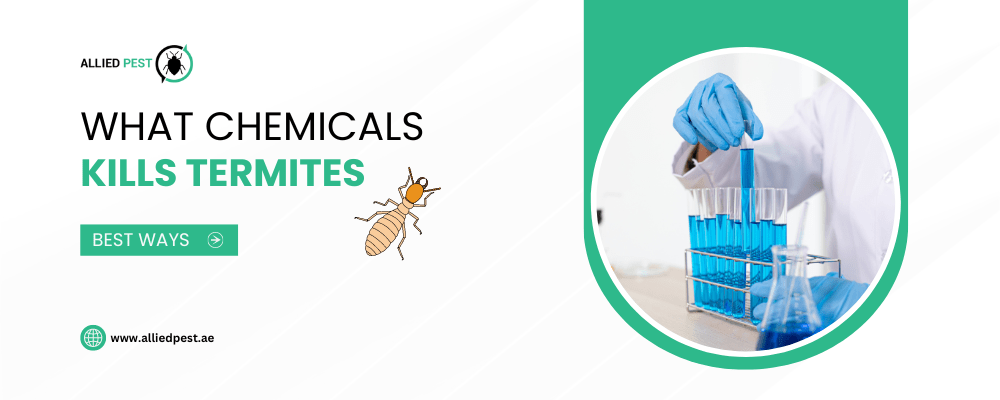Have you ever noticed tiny holes in your wooden furniture or heard a faint tapping sound coming from your walls? Don’t dismiss them as harmless; they could be signs of termite infestation! Termites are silent destroyers that can wreak havoc on your home, causing extensive damage and costly repairs. But fear not! In this ultimate guide, we will equip you with all the knowledge you need to spot these sneaky pests before they cause irreparable harm.
Throughout this blog, we will delve deep into the world of termites, uncovering their tell-tale signs and providing you with expert tips on how to detect their presence. From the typical warning signals like discarded wings and mud tubes to the less obvious indicators such as hollow-sounding wood and sagging floors, we will leave no stone unturned.
By understanding what to look for, you’ll be empowered to take swift and effective action, protecting your home from these destructive intruders. So, without further ado, let’s dive into the fascinating territory of termite infestations, as we arm you with the knowledge to safeguard your property and maintain peace of mind.
10 Signs of Termite Infestation –
- Discarded Wings
- Swarming Termites
- Mud Tubes
- Hollow-Sounding Wood
- Frass
- Tight-Fitting Doors or Windows
- Visible Damage
- Clicking Sounds
- White Ants
- Frayed or Damaged Wood
What Are Termites?
Termites are small insects that belong to the order Isoptera. They are notorious for their ability to cause significant damage to buildings and wooden structures. Termites thrive in social colonies called Termite Colony, working together to ensure the survival and growth of their population. Here are some key points to understand about termites:
The Social Structure of Termites
Termites live in hierarchical social structures called termite colony composed of different termites castes, including worker termite, soldiers, and reproductive individuals. Each caste has specific roles and responsibilities within the colony.
The Most Common Types of Termites
The termite species that commonly cause problems for homeowners are subterranean termites and drywood termites. Subterranean termites build their colonies underground and create mud tubes to connect their colonies to their food sources, while drywood termites infest dry, sound wood.
A Termite’s Diet and Behavior
Termites feed on cellulose, which is found in wood and plant materials. They are constantly searching for new food source to sustain their colony. Termites tunnel through wood, creating intricate galleries as they consume the cellulose. Their presence may go unnoticed until considerable damage has been done. You can mostly find termites on your home walls, wooden furniture, Ceiling roofs, yard and trees.
How do you know if you have termites?
If you suspect that you have a termite infestation in your house, there are several signs to look out for. The first and most obvious sign is the presence of discarded wings or swarming termites. During the reproductive stage, termites will swarm in search of a mate and establish new colonies. If you come across a pile of wings or see swarming termites around your property, it’s a clear indication of a termite problem.
Another sign to watch for is the appearance of mud tubes. Subterranean termites rely on these tubes to travel between their colonies and the wooden structures they feed on. These tubes are usually muddy or made from a combination of wood and soil, and they can be found along walls, foundations, or other areas where termites are present.
Hollow-sounding wood is also a potential indicator of a termite infestation. As termites consume the cellulose within wood, they create tunnels and galleries, which can weaken the structural integrity of the wood. If you tap on the wood and it sounds hollow or produces a dull sound, it’s a good idea to investigate further for termite activity.
Sagging floors or ceilings can be another sign of a termite infestation. As termites feed on wooden structures, they can cause the wood to weaken and become unstable. This can result in floors or ceilings sagging or appearing uneven. There are other important signs that you should also know about which are given below.
Top 10 Signs of a Termite Infestation
In this section, we will provide you with a comprehensive list of the top 10 signs that indicate a termite infestation. By familiarizing yourself with these warning signals, you can quickly identify if your home is at risk and take the necessary steps to address the problem.
1. Discarded Wings
One of the most obvious signs of a termite infestation is the presence of discarded wings. As mentioned earlier, termites swarm during their reproductive stage, and after finding a mate, they shed their wings. Finding piles of wings around your property indicates an active termite colony nearby.
2. Swarming Termites
Along with discarded wings, actually seeing swarming termites is a clear indication of a termite problem. These flying insects, often mistaken for flying ants, are seeking to establish new colonies. If you notice a swarm inside or outside your home, it’s important to address the issue promptly.
3. Mud Tubes
Subterranean termites build mud tubes to travel between their colonies and food sources. These tubes, which may appear along foundations, walls, or other areas, are made from a mixture of soil and termite saliva. If you come across mud tubes, termites are likely present.
4. Hollow-Sounding Wood
Termites consume cellulose within wood, creating tunnels and galleries as they feed. As a result, the affected wood may sound hollow or produce a dull sound when tapped.
5. Frass
Frass is a termite’s waste material and can indicate a termite infestation. It consists of tiny wood-colored pellets that termites push out of their tunnels as they construct their galleries. Finding frass around your home, especially near wooden structures, is a strong sign of termite activity.
6. Tight-Fitting Doors or Windows
When termites infest wooden door or window frames, they can cause the wood to warp or swell. This can result in doors or windows becoming difficult to open or close smoothly. If you notice that your doors or windows are suddenly fitting tightly, termites may be to blame.
7. Visible Damage
In some cases, you may actually see visible damage caused by termites. This can include small holes or tunnels in wooden structures, damaged furniture, or even bubbling paint on walls. If you observe any signs of physical damage, it’s important to address the problem as soon as possible.
8. Clicking Sounds
Termites are not entirely silent creatures. In some cases, you may be able to hear them clicking or tapping noises coming from within walls or other wooden structures. These sounds occur as termites communicate with each other and can indicate a significant termite presence.
9. White Ants
Termites are often mistaken for white ants due to their similar appearance. If you notice insects that resemble white ants in your home or property, it’s crucial to have them identified by a professional.
10. Frayed or Damaged Wood
Termites can cause wood to become frayed or damaged, especially when they are feeding on it. You may notice that wooden structures, such as furniture or even support beams, have uneven or chewed edges. This is a clear indication of termite activity.
What to do if you observe any of these signs of termite?
If you have observed any of these signs in your home or property, it is important to take immediate action. Termites can cause significant damage to your property if left untreated, leading to costly repairs and compromised structural integrity.
To effectively address a termite infestation, it is recommended to consult with a professional Termite control experts. They can assess the situation, identify the type of termites involved, and determine the best course of action to eliminate the termite infestation. Like using chemicals to kill termites.
Prevention is also key in avoiding termite problems in the first place. Regularly inspecting your property for any signs of termites, maintaining proper ventilation, and minimizing moisture sources can help deter termites from infesting your home.
Remember, early detection and prompt action are crucial when it comes to dealing with termites. By staying vigilant and proactively addressing any signs of infestation, you can protect your home and property from the destructive impact of these wood-eating pests.
The Importance of Spotting Termite Infestations Early
By spotting termite infestations early, you can save yourself from the headache and expense of dealing with significant damage to your property. Termites are destructive pests that feed on wood, compromising the structural integrity of your home or any wood-based structures. This is why it is crucial to actively look for signs of termite activity.
As mentioned before, there are several clear indicators of a termite infestation. From swarming termites and mud tubes to hollow-sounding wood and frass, these signs should not be ignored. If you notice any of these signs in your home or property, it is essential to take immediate action.
One of the best steps you can take is to consult with professional pest control services. They have the knowledge and experience to assess the situation, identify the type of termites involved, and recommend the most effective course of action to eliminate the infestation. Remember, getting rid of termites requires specialized knowledge and tools, so it’s best not to attempt to handle it on your own.
But prevention is always better than dealing with an infestation. Regularly inspecting your property for any signs of termites and implementing preventative measures can go a long way in deterring these pests from infesting your home. Proper ventilation and minimizing moisture sources are key factors in keeping termites at bay.
It is important to remember that termites are often mistaken for white ants due to their similar appearance.
key Takeaway: Spotting termite infestations early is crucial in protecting your property investment, avoiding structural problems, reducing health risks, acting preventively, saving money on repairs,
Is termite damage curable?
Yes, termite damage is curable. However, it is important to note that the extent of the damage and the type of termites involved will determine the appropriate treatment and the level of repair required. Prompt action is essential to minimize further damage and prevent the infestation from spreading. It is recommended to consult with a professional pest control expert who can assess the situation, determine the best course of action, and provide effective treatment options to eliminate the termite infestation. Additionally, taking preventive measures to avoid future infestations, such as regular inspections and maintenance, can help protect your property from termite damage in the long run. And these termite control services also doesn’t cost that much.
Conclusion
In summary, spotting termite infestations early is crucial for several reasons. By detecting a termite problem early on, you can protect your property investment and avoid costly repairs. Additionally, addressing termite activity promptly can help prevent structural problems and reduce health risks associated with termite droppings.
Taking proactive measures, such as regular termite inspections, can save you money on repairs and provide peace of mind. While termite damage is curable, it is important to consult with a professional pest control expert to determine the appropriate treatment and level of repair required. Remember, being proactive and vigilant in observing the signs of termite activity is essential for mitigating potential damage and preserving the integrity of your property.




